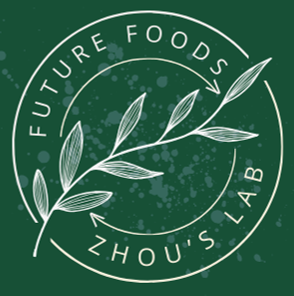Development of polyphenol-powered foods with a two-in-one post pH-driven strategy (2023-Now)
Introduction
Polyphenols, natural compounds found in plants, are well-known for their antioxidant, anti-inflammatory, and antimicrobial properties, as well as their potential to reduce the risk of chronic diseases such as cardiovascular conditions, diabetes, cancer, and neurodegenerative disorders. Despite these health benefits, incorporating polyphenols into food systems remains challenging due to their poor stability, low water solubility, and limited bioavailability during digestion. To address these limitations, we propose a simple pH-based method that leverages the increased solubility of polyphenols in alkaline conditions due to deprotonation (Figure 1). This approach enables efficient extraction and encapsulation of polyphenols from plants or byproducts, contributing to the development of more nutritious and functional foods.
Figure 1. (A) The water solubility of three polyphenols (curcumin, resveratrol, and quercetin) under different pH values. Data were obtained from an online database (chemicalize.com). (B) The chemical structures of polyphenols and potential structural groups to be deprotonated are cycled in red.
Reference
Csuti, A.; Zheng, B.; Zhou, H.* Post pH-driven encapsulation of polyphenols in next-generation foods: Principles, formation and applications. Critical Reviews in Food Science and Nutrition 2024, 64 (33), 12892-12906. DOI: https://doi.org/10.1080/10408398.2023.2258214.
- Polyphenol-fortified plant-based emulsions & milks
Using pH-driven methods, we successfully fortified nanoemulsions with multiple polyphenols, demonstrating improved encapsulation efficiency and gastrointestinal stability (Zhou et al., 2024). Additionally, we co-encapsulated polyphenols in plant-based milks, showing that these formulations protected the polyphenols during digestion and improved their bioaccessibility (Zheng & Zhou et al., 2023). Further studies revealed that curcumin-loaded plant-based milk analogs, including almond, cashew, coconut, and oat milks, varied in bioaccessibility depending on the milk type and lipid composition, emphasizing the importance of formulation optimization (Zheng & Zhou et al., 2021).
Reference
Zhou, H.; Zheng, B.; McClements, D. J. Utilization of pH-driven methods to fortify nanoemulsions with multiple polyphenols. Food Science and Human Wellness 2024, 13 (4), 1943-1950. DOI: https://doi.org/10.26599/FSHW.2022.9250161.
Zheng, B.‡; Zhou, H.‡; McClements, D. J. Co-encapsulation of multiple polyphenols in plant-based milks: Formulation, gastrointestinal stability, and bioaccessibility. Foods 2023, 12 (18), 3432. DOI: https://doi.org/10.3390/foods12183432.
Zheng, B.‡; Zhou, H.‡; McClements, D. J. Nutraceutical-fortified plant-based milk analogs: Bioaccessibility of curcumin-loaded almond, cashew, coconut, and oat milks. LWT 2021, 147, 111517. DOI: https://doi.org/10.1016/j.lwt.2021.111517.
- Health-promoting plant-based milks by integrating polyphenols from plants
Conventionally, the extration and encapsulation of polyphenols are separated. In this context, we developed a “two-in-one” processing strategy, combining extraction and encapsulation, to incorporate curcumin from turmeric into soymilk, to enhance its production sustainability and affordability. It achieved enhanced processing sustainability and efficiency (Figure 2).
Figure 2. A two-in-one PPD approach for developing health-promoted curcumin-enhanced soymilk. The bioactive curcumin molecules can be directly extracted from raw turmeric material and then encapsulated into soymilk.
Reference
Suryamiharja, A.; Gong, X.; Akoh, C. C.; Zhou, H.* Enhancing the efficiency and sustainability of producing curcumin-infused plant-based milk alternatives with a two-in-one post pH-driven processing strategy. Food Frontiers 2024. DOI: https://doi.org/10.1002/fft2.534.
- Peanut skin-powered foods
The polyphenols from plant byproducts, such as peanut skins, have been upcycled for the development of polyphenol-powered milk alternatives via a simple and effective post pH-driven (PPD) method (Figure 3). The PPD method outperformed the conventional water-based approach, achieving 1.8 times higher retention of total polyphenolic content. As a result, the enhanced food antioxidant properties have been observed, with DPPH and ABTS radical scavenging activities increasing by 3.7 and 2.8 times, respectively.
Figure 3. Incorporation of peanut skin-derived polyphenols into foods to improve quality and functionality. Key metrics include total phenolic content (TPC) and radical scavenging activities measured by DPPH and ABTS arrays.
Reference
Gong, X.; Wang, M.; Lu, P.; Zhou, H.* An improved pH-driven method for upcycling polyphenols from plants or byproducts into foods. Foods 2024, 13 (23), 3945. DOI: https://doi.org/10.3390/foods13233945.



